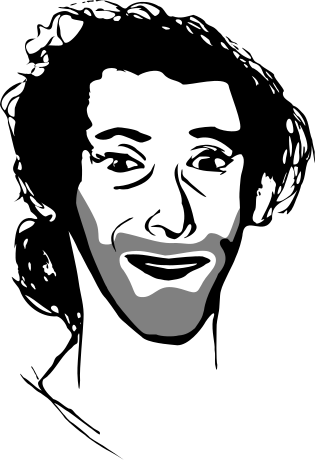Work with us to leverage leading-edge machine learning for neuroimaging
At Parietal, my research team, we work on improving the way brain images are analyzed, for medical diagnostic purposes, or to understand the brain better. We develop new machine-learning tools and investigate new methodologies for for quantifying brain function from MRI scans.
One of our important alley of contributions is in deciphering “functional connectivity”: analysis the correlation of brain activity to measure interactions across the brain. This direction of research is exciting because it can be used to probe the neural-support of functional deficits in incapacitated patients, and thus lead to new biomarkers on functional pathologies, such as autism. Indeed, functional connectivity can be computed without resorting to complicated cognitive tasks, unlike most functional imaging approaches. The flip side is that exploiting such “resting-state” signal requires advanced multivariate statistics tools, something at which the Parietal team excels.
For such multivariate processing of brain imaging data, Parietal has an ecosystem of leading-edge high-quality tools. In particular we have built the foundations of the most successful Python machine learning library, scikit-learn, and we are growing a dedicate software, nilearn, that leverages machine-learning for neuroimaging. To support this ecosystem, we have dedicated top-notch programmers, lead by the well-known Olivier Grisel.
We are looking for a data-processing engineer to join our team and work on applying our tools on very large neuroimaging databases to learn specific biomarkers of pathologies. For this, the work will be shared with the CATI, the Fench platform for multicentric neuroimaging studies, located in the same building as us. The general context of the job is the NiConnect project, a multi-organisational research project that I lead and that focuses on improving diagnostic tools on resting-state functional connectivity. We have access to unique algorithms and datasets, before they are published. What we are now missing between those two, and that link could be you.
If you want more details, they can be found on the job offer. This post is to motivate the job in a personal way, that I cannot give in an official posting.
Why take this job?
I don’t expect some to take this job only because it pays the bill. To be clear, the kind of person I am looking for has no difficulties finding a job elsewhere. So, if you are that person, why would you take the job?
- To join a great team with many experts, focused on finding elegant solutions to hard problems at the intersection of machine learning, cognitive science, and software. Choose to work with great people, knowledgeable, passionate, and fun.
- To work on interesting problems, that matter. They are interesting because they are challenging but we have the skills to solve them. They matter because they can make brain research better.
- To learn. NeuroImaging + Machine learning is a quickly growing topic. If you come from a NeuroImaging background and want to add to your CV an actual expertise in machine learning for NeuroImaging. This is the place to be.
What would make me excited in a resume?
- A genuine experience in neuroimaging data processing, especially large databases.
- Talent with computers and ideally some Python experience.
- The unlikely combination of research training (graduate or undergraduate) and experience in a non academic setting.
- A problem-solving mindset.
- A good ability to write about neuroimaging and data processing in English: who knows, if everything goes to plan, you could very well be publishing about new biomarkers.
Now if you are interested and feel up for the challenge, read the real job offer, and send me your resume.
